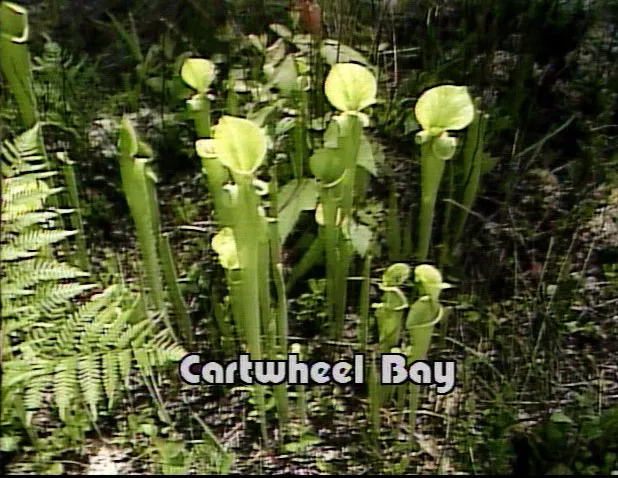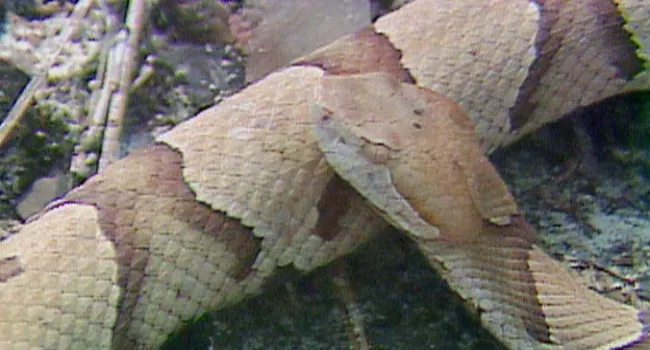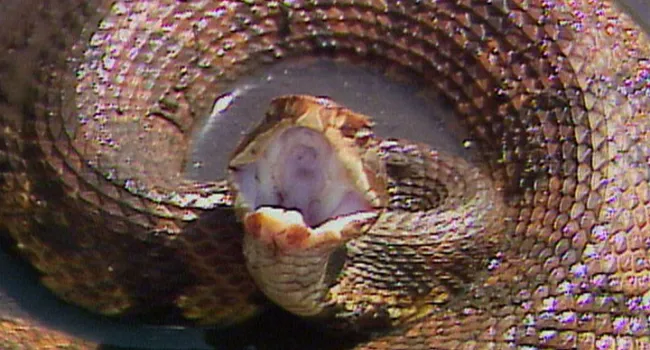
Photo
Pteridium aquilinum • True terrestrial fern • Forms thickets in full sun • Grows to 3 feet tall • 3 triangular fronds originate from single place • Long subterranean rhizomes spread quickly • Abundant...
Although many Carolina Bays are temporary ponds that hold water only part of the year, these wetlands host a variety of wildlife, providing valuable habitat for such animals as frogs, salamanders, turtles, snakes and alligators. Many birds, such as herons, egrets and migratory waterfowl, live in Carolina bays. Also mammals, such as deer, raccoons, skunks and opossums get food and water from Carolina bays. In addition, microscopic organisms called zooplankton live in Carolina bays. Salamanders and frogs are among the most abundant wildlife found in Carolina bays. As amphibians, these animals spend part of their lives in the water; as adults, they depend on Carolina bays as breeding sites where they lay their eggs.
Average water depth and soil type have a large influence on the types of plants found in and around Carolina bays. Many bays contain trees such as black gum, sweet gum, magnolia, bald cypress and maple, and shrubs such as sumac, button bush, gallberry and red bay. Also common in Carolina bays are water lilies, sedges and various grasses. Cartwheel Bay also offers several varieties of rare and beautiful carnivorous plants.
Closed captioning has been provided for this broadcast program.

Photo
Pteridium aquilinum • True terrestrial fern • Forms thickets in full sun • Grows to 3 feet tall • 3 triangular fronds originate from single place • Long subterranean rhizomes spread quickly • Abundant...
Photo
Pinguicula lutea Bladderwort Family (Lentibulariaceae) Carnivorous herb 12.5 - 45 cm (5 - 18 inches) tall Solitary, yellow flower at end of leafless, glandular stalk Stalk rises from basal rosette of...
Photo
Osmunda cinnamomea • Taller fronds in clumps • Ferns have underground stems, rhizomes, which ensure regrowth after fire • Has rusty-woolly stalks • Grows in wet, low thickets • In the center of the...
Photo
• Agkistrodon contortrix • Moderately large, stout-bodied poisonous snake • Chestnut brown hourglass-shaped crossbands with light centers on body pattern • Green-yellow tail tips in juveniles • Pit...
Photo
• Rhododendron atlanticum • Coastal Plain deciduous shrub • Grows 90 - 120 cm (3 - 4 feet) tall in dense colonies • Spreads by underground runners • Leaves wedge-shaped to elliptic • Twigs bristly and...
Photo
• Agkistrodon piscivorus piscivorus • Very poisonous, large semi-aquatic relative of the copperhead and rattlesnake • Olive, brown, or black above; belly lighter color • Crossbands with dark borders •...
Photo
• Erigeron annus • White composite flower • Tufted white weed • Member Sunflower Family • Name originated in belief that dried flowers could rid fleas • Erect stem covered with spreading hairs bearing...
Photo
Sarracenia minor Likes boggy areas Carnivorous, mostly insects Translucent spots on back of hood Hood is a modified leaf Hood flops down Gives off sweet smells Digestive fluid at the bottom of tubular...
Photo
Pinus palustris Beautiful starlight southern tree valued for turpentine and timber Height 60 - 70 feet Likes sandy areas Very long dark green needles grouped in 3's 8 - 18 inch needles clustered...
Photo
• Rhexia virginica • Height 30 - 60 cm (1 - 2 feet) • Pink flowers in broad, terminal clusters on sturdy 4-sided, slightly winged stem • Flowers 2.5 - 3.8 cm (1 - 1.5 inches) wide • 4 petals with...